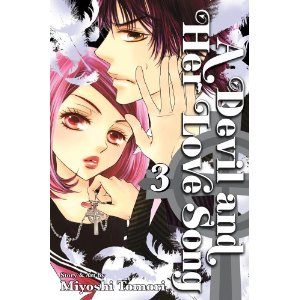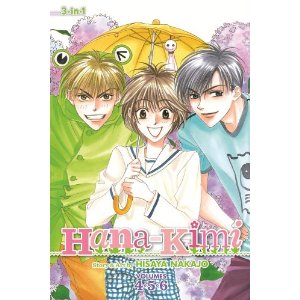Dengeki Daisy Volume 10 by Kyousuke Motomi
The tenth volume of Dengeki Daisy has a bunch of the elements that sparked my initial enthusiasm in the series. Not that the most recent volumes weren’t good, but the ongoing storyline and the changes the characters were going through prevented some of the joking asides and meta-commentary on the shoujo genre that made me initially assess Dengeki Daisy as a good shoujo series for people who hate shoujo. Dengeki Daisy is so delightfully quirky due to the twists that Motomi will put on standard shoujo plot devices. Teru and Kurosaki are back at school and Teru is cramming for final exams. The varying reactions of Teru’s friends to their impending exam doom serves to highlight the personalities of the supporting cast. When a fellow student attempts to blackmail Teru for a favor, threatening to expose Kurosaki’s secrets, Teru tells him to do his worst and promptly reports back to Kurosaki. In a more typical shoujo manga a blackmail storyline would be drawn out over a volume or two instead of promptly resolved in a few pages. Teru’s always been a strong heroine, but this volume really showcases her maturity. When her erstwhile blackmailer confesses that he was threatening her because he was desperate to get her help studying for a Japanese Literature exam, Teru decides to give up a rare movie date with Kurosaki in order to help him.
An author with a finely honed sense of sarcasm is a rare thing in shoujo manga, so I was particularly amused when the concept of winter break “a time that makes a girl’s heart quiver with excitement,” was introduced over an impossibly idealized image of Teru and Kurosaki in a panel filled with Christmas trees, presents, and ribbon. Turning the page, instead of being confronted with Teru stressed over what to buy Kurosaki for a Christmas present, we get the blunt narration that break is over and the third semester of school has started. Teru’s clutching a drink and looking glassy-eyed and her friends are interrogating her about homework and yelling “This is a shoujo manga, how can you skip the entire break!?” Teru indulges in a bit of naval-gazing about her relationship with Kurosaki, but she manages to be very sensible and true to herself while she wonders what the next step is. The knowledge that the dangerous hacker Akira is still out there casts a bit of a damper on a relatively peaceful time in this manga, and any Kurosaki fans who have been missing out on his occasional tough guy antics will find those desires ably met by the end of this volume. Overall, this was a very satisfying volume of Dengeki Daisy. Ten volumes in and I’m not getting bored or even wanting the story to wrap up!




